|
|
Dear colleagues,
CHRISP is a new name among our user facilities. All particle physics facilities at PSI are newly grouped under this acronym, standing for Swiss Research InfraStructure for Particle physics. CHRISP should now be mentioned along with SINQ, SμS, SLS and SwissFEL. To CHRISP belong pion and muon beamlines of targets M and E, next to the ones of SμS in the main experimental hall of PSI West, the neutron beam ports of the UCN source for ultracold neutrons, and the proton irradiation facility PIF.
|
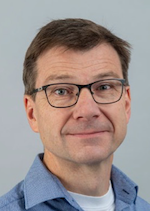
Klaus Kirch
|
|
Due to the unmatched performance of the High Intensity Proton Accelerator HIPA, by far outrunning its competitors and its own design current by a factor of 20-25, CHRISP is world-leading. To stay ahead and enable new, unique and exciting science, a future upgrade benefitting CHRISP and SμS, the High Intensity Muon Beam HIMB, can provide another up to two orders of magnitude more surface muons from a new target station M*. The Swiss particle physics community CHIPP is currently providing its input to the Swiss Roadmap for Research Infrastructures, including the proposition to realize HIMB at PSI during 2025-28.
Klaus Kirch
Head of the Laboratory for Particle Physics LTP, NUM division, PSI
|
|
Impact of COVID-19 on user operation at PSI
We are happy to welcome you back for SLS and SwissFEL user operation. Safety measures remain in place and we kindly ask for your cooperation in reducing the team size on site as much as possible without jeopardizing the success of the experimental campaigns. Please use a combination of local and remote access or 100% remote wherever possible (e.g. MX).
|
 courtesy of imago images / Science Photo Library courtesy of imago images / Science Photo Library
|
|
|
For the SLS, the proposal cycle continues but we need to keep in mind that changing travel restrictions may severely impact the user program. Remote access and mail-in should be considered to ensure that experimental campaigns can take place. For SwissFEL no new call for proposals has been launched and in the next semester we will schedule postponed experiments and high-quality proposals from the existing reserve list or the previous call.
Since September 1, also the facilities driven by the High-Intensity Proton Accelerator HIPA such as SINQ, SμS and the facilities for particle physics are open for external users again. For all facilities dedicated safety concepts have been developed aiming at the best possible protection for our users and staff.
As you know, the situation is moving fast and is hardly predictable. We will try to keep you informed. Please visit the User Office Homepage for the latest updates.
|
|
Next proposal submission deadlines:
SLS: PX beamlines
deadline: October 15, 2020
more information
SINQ
deadline: November 15, 2020
more information
SµS
deadline: December 7, 2020
more information
CHRISP
deadline: January 11, 2021
more information
SLS: non-PX beamlines
deadline: March 15, 2021
more information
SwissFEL
deadline: March 15, 2021
more information
An overview of all proposal submission deadlines of the PSI facilities can be found here.
|
|
|
Restart of Dinner at OASE
The PSI restaurant will be open for dinner again
From October 5 to December 18 the PSI restaurant "OASE" will be open again for dinner between 17:30 and 20:00. As an additional service some of the menus can also be ordered as take away.
Also from October 5 all PSI cafeterias will extend their opening hours and will be open from 8:00 to 15:30.
|
|
|
Observation and control of maximal Chern numbers in a chiral topological semimetal
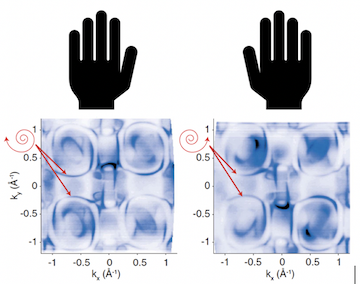 SLS - Cherned up to the maximum SLS - Cherned up to the maximum
In topological materials, electrons can display behaviour that is fundamentally different from that in ‘conventional’ matter. The magnitude of many such ‘exotic’ effects is directly proportional to an entity known as the Chern number. Experiments at the ADRESS beamline of SLS and at the Diamond Light Source (UK) establish now for the first time that the theoretically predicted maximum Chern number can be reached in a real material. The researchers set this benchmark studying the topological semimetal palladium gallium, in which they observed Chern numbers of magnitude 4 - the maximum value allowed in any metallic crystal. Moreover, they found ways to control the sign of the Chern number, which might bring new opportunities for exploring, and exploiting, topological phenomena.
Read the full story
|
|
|
N.B.M. Schröter et al., Science 369, 179 (2020)
|
|
|
Fractional antiferromagnetic skyrmion lattice induced by anisotropic couplings
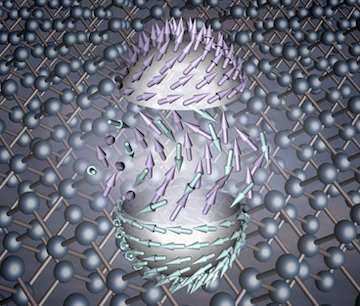
SINQ - Nanostructures with a unique property
Magnetic skyrmions are topologically stable spin textures that have attracted substantial interest, both for their deep conceptual connections to various fields of science and for future technological uses. Traditionally associated with ferromagnetic spin alignment, these nanoscale structures have been predicted to emerge as well in materials with antiferromagnetic arrangements of neighbouring spins. Researchers now report the first experimental realization of such antiferromagnetic skyrmions. Combining neutron scattering and Monte Carlo simulation, they establish that the recently discovered triple-q phase in the spinel MnSc2S4 hosts a fractional antiferromagnetic skyrmion lattice that is stabilized by anisotropic couplings. The work provides fresh perspectives for harnessing skyrmions in spintronic devices, potentially with more flexible control than is possible with ferromagnetic skyrmions.
Read the full story
|
|
|
S. Gao et al., Nature, 23 September 2020 (online)
|
|
|
Proximity-induced odd-frequency superconductivity in a topological insulator
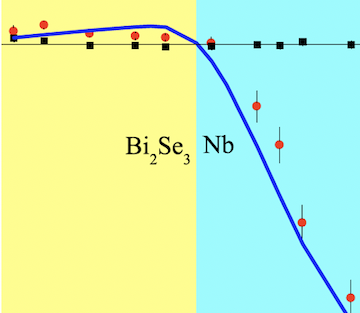
SμS - ‘Odd’ superconductivity at the interface
The interface between a topological insulator (TI) and a superconductor is an arena for intriguing physics. An unexpected new example of that is the finding that a conventional niobium superconductor proximity-coupled to the prototypical TI Bi2Se3 induces odd-frequency superconductivity. For odd-frequency states, the correlation function describing the electrons of a Cooper pair is odd in time. Remarkably, in odd-frequency superconductors the Meissner effect can be paramagnetic rather than diamagnetic, as characteristically seen in superconductors. The researchers observed such paramagnetic Meissner screening by low-energy muon spin rotation performed at SμS, where they found - for the first time in a TI - an enhancement of applied magnetic fields inside Bi2Se3, caused by the induced odd-frequency pairing in the bulk.
Read the full story
|
|
|
J.A. Krieger et al., Physical Review Letters 125, 026802 (2020)
|
|
|
Spin cascade and doming in ferric hemes
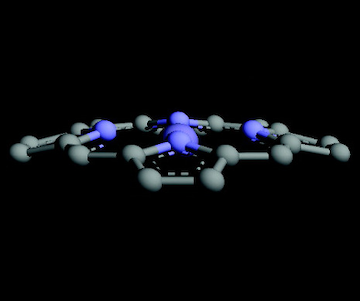 SwissFEL - Another iron dome SwissFEL - Another iron dome
In biology, structure and function are closely interwoven. A case in point is oxygen transport in the lungs, which relies on ferrous heme proteins adopting dome-like shapes. Previous work has suggested, however, that no such doming takes place in their ferric counterparts, where the coordination centre is Fe(III) rather than Fe(II). A study combining femtosecond X-ray emission spectroscopy (XES) and X-ray absorption near-edge structure (XANES) now challenges that assumption. Experiments performed at SwissFEL and the European XFEL provide evidence that in the ferric form of the heme protein cytochrome c, a cascade among excited spin states of the iron ion occurs upon photoexcitation, causing in turn doming - and raising fresh questions about the structure-function relationship in these complexes.
|
|
|
C. Bacellar et al., Proc. Natl. Acad. Sci. U.S.A. 117, 21914 (2020)
|
|
|
Anna Sótér appointed Tenure Track Assistant Professor
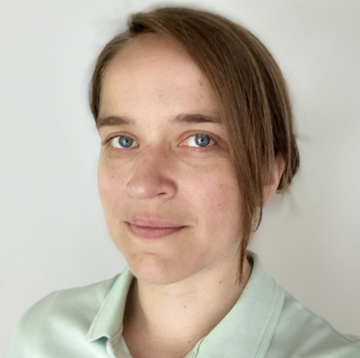 CHRISP CHRISP
Anna Sótér was appointed Tenure Track Assistant Professor of Low Energy Particle Physics at ETH Zurich. Throughout her career, she has been using the unique experimental capabilities at PSI. In particular, she was centrally involved in studies with pionic helium at the 590-MeV ring cyclotron that resulted in the first demonstration of laser spectroscopy of a meson. In January 2020, she started an SNSF Ambizione fellowship, hosted by the group of Prof. Klaus Kirch at ETH Zurich, where she develops a novel source of muonium - which consist of a positive muon and an electron - to explore the properties of these exotic atoms in interferometry experiments, enabling novel investigations of antimatter gravity, as well as in high-precision spectroscopic studies.
Read the full story
|
|
EU Access Program for SMEs
SLS
CALIPSOplus, a European Horizon 2020 funded research and innovation program, provides access support for SMEs to light sources. The access is based on a specific review system for SMEs in parallel to the established academic access route but following the same principles. Proposal confidentiality is ensured during the whole process. If the proposal is accepted, the SME will have access to the requested light sources and the experiments will be financially supported through CALIPSOplus. The current call is open from September 1 to December 21, 2020. More information.
|
|
Back in operation
SINQ
During July, the SINQ guide upgrade project was completed and SINQ started to produce again neutrons. Many of the neutron instruments were put back into operation at the beginning of August. Expected recommissioning work on the instruments was performed in August, together with first in-house and friendly-user experiments. The user program started in earnest on September 1. A few remaining instruments, such as AMOR, DMC and CAMEA, will return into operation later this year and next year. All of this was and is possible thanks to the unbroken enthusiasm of the engineering and science teams at PSI that delivered most of the milestones of the SINQ upgrade project almost on time despite a global pandemic!
|
|
Experiments under COVID-19 restrictions
SμS
Starting from September 1, external/foreign users have been allowed to perform experiments at the SµS. However, as Swiss and foreign travel restrictions apply only very few users actually visited PSI. To cope with this unusual situation, the PSI team conducted most of the experiments with the remote support from the users. For experiments that could not be performed in this way, the approved beamtime has been shifted to the next year. This will create a major backlog for the next allocation periods.
|
|
First light in Maloja endstation
SwissFEL
On Friday June 26 late in the evening, the intense soft X-ray pulses from the Athos undulator lines have entered the Maloja endstation for the first time. Already in the following days electron, ion, and photon spectra were measured from single x-ray pulses. The technical, engineering, and scientific staff across divisions worked tirelessly also during the COVID-19 times to reach this milestone. The endstation will now go through thorough commissioning and commence user operations in 2021.
|
|
Solenoid for the Mu3e magnet arrived
CHRISP
The Mu3e superconducting solenoid can reach fields up to 2.3 T in its warm bore of 1 m diameter and 2.3 m length. It was manufactured in London, UK, despite difficult circumstances due to the pandemic situation. The system is of the dry type, without cryogenic fluids. The superconducting coil is brought down to the required low temperatures using four double-staged Gifford-McMahon cryocoolers.
Currently the acceptance tests are ongoing and the solenoid will be transferred to the πE5 area later this year. Over the next few years, Mu3e is performing a search for the ultra-rare decay µ→eee using a novel silicon tracker and scintillators in a field of 1 T. The sensitivity for the branching ratio will be will be improved by 2-3 orders of magnitude in πE5 and can reach the 10 -16 level at the envisaged high intensity muon beam (HIMB), four orders of magnitude lower than the best current limit set by SINDRUM (also at PSI). |
|
JUSAP - The Joint Users Association
Dear colleagues,
The past six months have been challenging, in both our private and professional lives, making it difficult to follow the status of travel restrictions and access to large scale facilities.
|
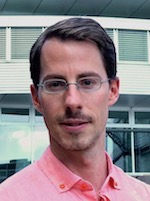
Claude Monney
|
|
This situation and remote operation places large demands on PSI staff, in terms of maintaining in-depth communications with external experimenters, as well as computing facilities, requiring fast internet connections and the management of additional user accounts with control privileges. On behalf of the user community, the JUSAP committee thanks the staff of the large-scale facilities at PSI for their dedication.
The Swiss Light Source returned to normal operation on June 5 for users of all non-MX beamlines. User operation on MX beamlines is still limited to remote access. SwissFEL resumed operation with international users in early September, 2020. There was no open call for proposals in the autumn of 2020 except for the “PRIORITY COVID-19 Call”, which will be continuously open until the end of 2020 for users of SwissFEL as well as SLS. The next call for proposals for SwissFEL will be launched on February 8, 2021.
The beginning of September also saw the first week of HIPA user operation. Following a long shut down and upgrade, the SINQ facility is back and welcomed first external users again on September 1. It will be accepting new proposals (deadline: November 15, 2020).
At the Swiss Muon Source (SμS) the normal user program resumed, including international experimenters. In reality, due to COVID-19 related restrictions to travel, the experiments were largely controlled remotely. Given the increased use of online resources, the executive committee of the International Society for Muon Spectroscopy would like to encourage its members to take advantage of the available e-learning material. New users to PSI are also encouraged to join the ISMS community!
The CALIPSOplus second periodic report, including activities of the European synchrotron and free electron laser user organization (ESUO) (see e.g. Facility News II/2019, III/2019, II/2020), was submitted to the European Commission and accepted in June 2020. Information about ESUO, its activities and any news relevant for the user communities are also shared via the ESUO website and the corresponding LinkedIn and Twitter pages.
The current JUSAP committee will finish its period of office in Spring 2021. In accordance with its statutes, elections of the JUSAP members by the PSI user community will take place shortly.
We encourage you, members of the PSI user community, to communicate to us any issues, concerns or suggestions. In this case, please contact us, committee members, directly.
Yours sincerely,
The JUSAP committee
|
|
|
|